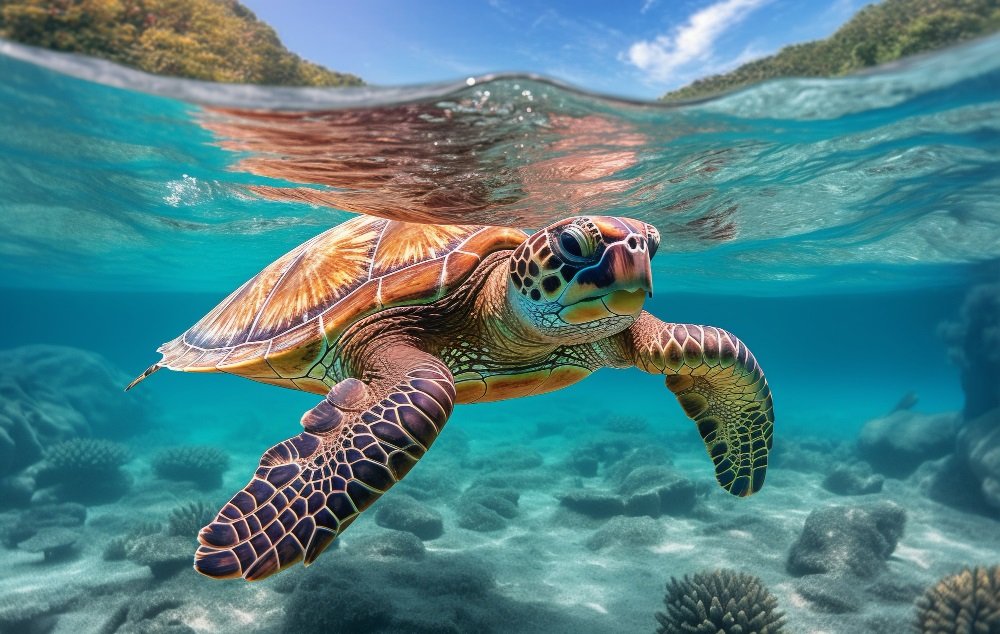Understanding the conservation status of sea turtles is crucial for the health of our oceans and the preservation of these ancient creatures. Sea turtles, majestic reptiles that have roamed the seas for millions of years, face a multitude of threats that have pushed many species to the brink of extinction.
Are Sea Turtles Endangered Species?
The short answer is yes, most sea turtle species are considered endangered or threatened. These magnificent creatures are classified as such due to a combination of factors that have significantly impacted their populations worldwide.
Threats to Sea Turtles
Sea turtles encounter numerous perils throughout their life cycle, from nesting on vulnerable beaches to navigating the vast expanse of the ocean. Some of the most pressing threats include:
- Habitat loss and degradation
- Fishing gear entanglement
- Climate change
- Pollution
- Illegal poaching
The consequences of these threats are dire, leading to declining populations and a growing risk of extinction for several sea turtle species.
Are Sea Turtles Endangered Species?
Sea turtles, majestic creatures that have roamed our oceans for millions of years, are facing a dire threat. Sadly, all seven species of sea turtles are listed as either endangered or threatened by the International Union for Conservation of Nature (IUCN). Their populations have dwindled dramatically due to a complex interplay of human activities and environmental changes. Understanding the factors contributing to their decline is crucial for implementing effective conservation strategies to ensure their survival.
The Seven Species of Sea Turtles
There are seven distinct species of sea turtles, each with unique characteristics and habitats:
- Leatherback Sea Turtle (Dermochelys coriacea): The largest of all sea turtles, known for its leathery carapace and diet of jellyfish.
- Green Sea Turtle (Chelonia mydas): Primarily herbivorous, feeding on seagrasses and algae, often found in tropical and subtropical waters.
- Loggerhead Sea Turtle (Caretta caretta): Named for its large, powerful head, it has a wide diet including crabs, conchs, and jellyfish.
- Hawksbill Sea Turtle (Eretmochelys imbricata): Recognized by its beautiful, intricately patterned shell, it feeds on sponges and other invertebrates.
- Kemp’s Ridley Sea Turtle (Lepidochelys kempii): The smallest and most endangered sea turtle species, found primarily in the Gulf of Mexico.
- Olive Ridley Sea Turtle (Lepidochelys olivacea): Known for its mass nesting events called “arribadas,” it feeds on crabs, jellyfish, and other invertebrates.
- Flatback Sea Turtle (Natator depressus): Found only in Australia, it has a flattened carapace and a diet consisting mainly of jellyfish and sea cucumbers.
Threats to Sea Turtle Populations
Sea turtles face a multitude of threats that have led to their decline. These threats can be broadly categorized as follows:
Habitat Loss and Degradation
Coastal development, pollution, and climate change are all contributing to the loss and degradation of sea turtle habitats. Coastal erosion, dredging, and the construction of seawalls can destroy nesting beaches and disrupt foraging grounds. Pollution from land-based sources, such as agricultural runoff and sewage, can contaminate water and food sources, harming sea turtles. (See Also: Can Turtles Eat Bloodworms)
Fishing Gear Entanglement
Sea turtles often become entangled in fishing gear, such as nets and longlines, leading to drowning, injury, or starvation. Ghost fishing, where abandoned or lost gear continues to trap marine life, poses a significant threat.
Climate Change
Rising sea levels and ocean acidification are altering sea turtle habitats and impacting their reproductive success. Warmer temperatures can lead to skewed sex ratios in hatchlings, with more females being born.
Pollution
Sea turtles ingest plastic debris, which can block their digestive tracts and lead to starvation. Chemical pollutants, such as pesticides and industrial waste, can accumulate in their bodies, causing reproductive problems and other health issues.
Illegal Wildlife Trade
Sea turtle eggs and shells are highly sought after in some cultures, leading to illegal poaching and trade. This practice decimates populations and threatens their survival.
Conservation Efforts
Recognizing the urgency of the situation, numerous organizations and governments are working to conserve sea turtles. These efforts include:
Protected Areas
Establishing marine protected areas and nesting beach sanctuaries helps safeguard critical habitats from human disturbance and exploitation. (See Also: What Do Baby Snapping Turtles Look Like)
Fisheries Management
Implementing regulations and gear modifications to reduce sea turtle bycatch in fisheries is crucial for minimizing entanglement and mortality.
Public Education and Awareness
Educating the public about the threats facing sea turtles and promoting responsible behavior, such as reducing plastic consumption and supporting sustainable seafood choices, is essential for long-term conservation success.
Research and Monitoring
Ongoing research and monitoring programs provide valuable data on sea turtle populations, their movements, and the effectiveness of conservation measures.
International Cooperation
Collaboration among nations is essential for addressing transboundary threats to sea turtles, such as illegal trade and climate change.
Conclusion
Sea turtles are facing a perilous future, but through concerted conservation efforts, their survival can be ensured. By addressing the threats they face, protecting their habitats, and promoting sustainable practices, we can help these magnificent creatures continue to grace our oceans for generations to come.
Frequently Asked Questions About Sea Turtle Conservation
Are sea turtles endangered?
Yes, all seven species of sea turtles are considered endangered or threatened. Their populations have declined significantly due to habitat loss, pollution, fishing gear entanglement, and climate change.
Which sea turtle species is most endangered?
The most critically endangered sea turtle species is the leatherback sea turtle. They face threats from overfishing, habitat destruction, and climate change. (See Also: What Does It Mean If You Dream About Turtles)
What can I do to help protect sea turtles?
There are many ways to help! Reduce your plastic consumption, support sustainable seafood practices, avoid using harmful chemicals that can pollute the ocean, and participate in beach cleanups. You can also donate to organizations working to conserve sea turtles.
How do sea turtles contribute to the ecosystem?
Sea turtles are important for maintaining healthy ocean ecosystems. They graze on seagrass and algae, which helps control their populations. They also act as a food source for other animals and their nesting activities help to aerate the sand and promote plant growth.
Where can I learn more about sea turtle conservation?
You can find valuable information about sea turtles and how to help them at websites like the World Wildlife Fund (WWF), the Sea Turtle Conservancy, and the National Oceanic and Atmospheric Administration (NOAA).


